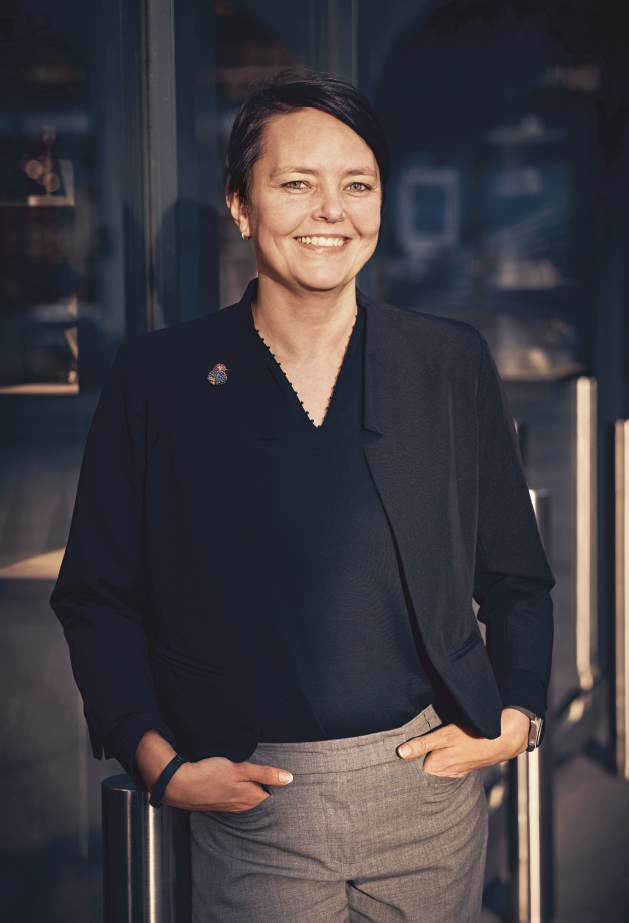Beyer buys and sells pre-owned watches too – and has been doing so since 1965. Has the demand ever been as great as it is today?
No, if you could afford a watch in the past, you might have had an everyday watch and a Sunday watch; they were then left to your children. Our stock books from the 1960s reveal that it was mainly clocks and pocket watches that we bought and sold preowned. The market for pre-loved wristwatches has only exploded in the last ten years or so. But the pace of growth has been all the more stunning.
How do you explain this boom?
It is probably a combination of disposable wealth, broad aesthetic consciousness and the tendency of designers to borrow from a past that was far bolder than our time. Whether fashion, furniture or architecture: old design elements, newly interpreted, are experiencing a comeback. Many watch brands are also turning to models that were successful in the past, and re-releasing them with slight modifications. But evidently many customers seem to feel that the original is always more beautiful than a reproduction watch.
How are they different?
The charm of an older watch is difficult to put into words. You really have to hold such an object in your hand to grasp its charisma. The dial may have slight signs of age, the hands may even be tarnished, and the case may also show traces of wear. But all these details tell a story and bear witness to a history.
Isn’t a new watch much more reliable?
That’s not necessarily the case. Many manufacturers that were famous for their elaborately designed timepieces no longer produce in the quality they once stood for.
Rare models from Patek Philippe and Rolex achieve record prices at auctions. To what extent are pre-loved watches also bought for speculation?
For collectors, it is seldom about making an investment, but about the timepiece itself. And for the most exceptional pieces, we try to find owners that deserve them. Incidentally, I generally advise against buying a watch for speculation purposes; times and tastes change much too quickly
What does a ‘real’ collector look for?
They concentrate mainly on certain epochs or complications that they find fascinating. Many collectors are happy if their purchases retain their value. If a watch is worth more after 25 years, that’s a nice added bonus for them.
How do you think the market for pre-worn watches will develop over the next few years?
That kind of prediction is difficult to make. It may well be that the vintage bubble will burst. But well-preserved rarities from renowned manufactories will always fetch a handsome sum. Not least because these brands guarantee professional servicing, i.e. that the watches will continue to run perfectly.
Pre-loved watches are also offered for sale online, often quite cheaply. Are such offers genuine?
There are doubtless genuine offers out there. But finding them is like visiting a flea market: separating the wheat from the chaff takes time and the necessary knowledge. It’s not just about the visual impression. The value of a watch is always defined by its inner condition as well. Another important detail is when the last service was performed – and by whom.
As an amateur, am I in any position to assess the condition of a pre-loved watch?
If you have only had limited exposure to older watches, it’s difficult. There are so many little things to consider that you only realise over time. The wrong spare parts, for example, can quickly have a very detrimental effect on a movement. Or if an owner had the watch modified by someone who, say, fitted a different dial: it’s possible that the manufactory won’t lay a finger on the watch any more, meaning it can’t be serviced.
Beyer checks the origin of the watches very carefully. How is that possible?
We can identify watches with a ‘Beyer’ inscription by comparing with our stock books. For other watches, we send a query to the archives of the relevant brands – or send them straight to the manufacturer for servicing – so that their authenticity is confirmed that way. Many brands write that the servicing does not guarantee the authenticity of the watches, but the manufacturers would have nothing to do with the timepieces if it weren’t the case.
Beyer’s pre-loved range comprises not just watches but jewellery too: is it possible to compare the two areas with each other?
Items of jewellery are more difficult to judge. It depends to a large extent on who created it, especially for custom pieces. The quality of gemstones has to be determined in each individual case. Very old jewellery has often been reworked into newer jewellery over time. Besides, there is much more of a focus on fashion here than for watches. Jewels from the Art Nouveau or Art Deco periods are more likely to appeal to today’s tastes than those from the 1960s or 1970s. With watches, though, it is precisely these years that are of interest to many collectors, as people often want to buy a timepiece from their birth year.
You yourself mainly wear jewellery from Art Deco and the Fifties. What fascinates you about these eras?
Both eras were preceded by major wars that brought years of misery, deprivation and inconceivable hardship. Art Deco reflects a time of liberation, in fashion too: the constricting corsets were abolished and replaced by practical dresses. The jewellery was correspondingly multifaceted: strictly geometric, but with a wealth of shapes that we still find fascinating today. In the 1950s, people were recovering from the Second World War, they had money again and wanted to show off their newly acquired wealth – with large, seemingly heavy gold jewellery. Those who could afford it had their jewellery lavishly embellished with coloured stones and diamonds. The wristwatches, especially the cases, lugs and dials from this period, are also much more expressive and fanciful than they had been a few decades earlier. In addition, in the 1950s, the production of wristwatches overtook that of pocket watches in terms of quantity, and wrist-borne timepieces finally became established. At no other time, either before or after, was there more going on in the watch and jewellery sector.












